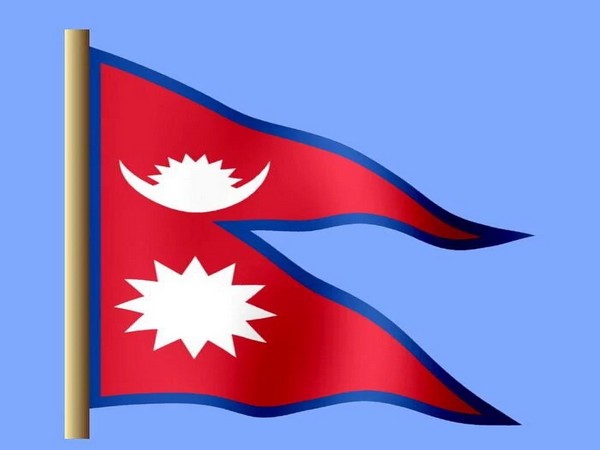Nepal reacts to “standard map” of China, says neighbours should respect Nepal’s map
Issuing a response to queries about the "so-called" standard map of China, Nepal's Ministry of Foreign Affairs on Friday called on all neighbours to respect the 2020 issued map.

- Country:
- Nepal
After Malaysia, Philippines and India, Nepal has become the latest of China's neighbours to object to the so-called "standard map" issued by Beijing and accused it of claiming their territory. Issuing a response to queries about the so-called "standard map" of China, Nepal's Ministry of Foreign Affairs on Friday called on all neighbours to respect the map issued in 2020.
On August 28, China released the 2023 edition of its so-called "standard map", incorporating the country's claims over the nine-dash line, thereby laying claim to a large part of the South China Sea. Nepal's Ministry of Foreign Affairs official spokesperson in a press release said, "Nepal stands firm and clear on its political and administrative map unanimously approved by the Parliament of Nepal in 2020. The Government of Nepal unequivocally believes that this map must be respected by our neighbors as well as the international community."
It further said, "Nepal remains committed to resolve the boundary matters through dialogues and diplomacy." After China released its so-called "standard map" on August 23, India lodged a strong protest against Beijing and said they had no basis to claim India's territory.
In response to media queries, the Official Spokesperson of the Ministry of External Affairs, Arindam Bagchi said: "We have today lodged a strong protest through diplomatic channels with the Chinese side on the so-called 2023 "standard map" of China that lays claim to India's territory." "We reject these claims as they have no basis. Such steps by the Chinese side only complicate the resolution of the boundary question," he added.
The map released on August 28 by Beijing shows Arunachal Pradesh which China claims as South Tibet and Aksai Chin occupied by it in the 1962 war as part of its territory. The map also stakes claim over Taiwan and the disputed South China Sea. The map also incorporates China's claims over the nine-dash line thus laying claim to a large part of the South China Sea. Vietnam, the Philippines, Malaysia, and Brunei have all claims over the South China Sea areas.
Vietnam has also rejected all claims by Beijing in the East Sea region in the Indo-Pacific. Hanoi has strongly reiterated its consistent stance on the sovereignty over Hoang Sa (Paracel) and Truong Sa (Spratly), and resolutely rejected any maritime claims of China that are based on the "nine-dash line" in the East Sea, Vietnam-based news platform 'Vietnam +' reported. The spokeswoman of the Vietnamese Ministry of Foreign Affairs Pham Thu Hang on August 31 made the statement, while answering questions on Vietnam's response to the Chinese Ministry of Natural Resources (MNR)'s release of the so-called "standard map 2023" which covers Vietnam's Hoang Sa and Truong Sa.
"The issuance of the map as well as China's "nine-dash line" claim show a violation of Vietnam's sovereignty over Hoang Sa and Truong Sa, as well as Vietnam's sovereignty, sovereign rights and jurisdiction over its waters as stipulated in the 1982 United Nations Convention on the Law of the Sea (1982 UNCLOS)," Vietnam + quoted Hang as saying. "Therefore, the sovereignty and maritime claims based on the "nine-dash line" as reflected in the map are void and violate international law, particularly the 1982 UNCLOS," she added.
The Philippines rejected China's 2023 edition of its "standard map," which includes the nine-dashed line (now a ten-dashed line) in their territory. Philippines Foreign Ministry in an official release said, "This latest attempt to legitimize China's purported sovereignty and jurisdiction over Philippine features and maritime zones has no basis under international law, particularly the 1982 United Nations Convention on the Law of the Sea (UNCLOS)."
"The 2016 Arbitral Award invalidated the nine-dashed line, the statement read, adding that "maritime areas of the South China Sea encompassed by the relevant part of the 'nine-dash line' are contrary to the Convention and without lawful effect to the extent that they exceed the geographic and substantive limits of China's maritime entitlements under the Convention". The Philippines called on China to act responsibly and abide by its obligations under UNCLOS and the final and binding 2016 Arbitral Award.
Malaysia also rejected the latest edition of the so-called "standard map" of China that lays claim to almost the entire South China Sea, including areas lying off the coast of Malaysian Borneo, Al Jazeera reported. Malaysia stated that the new map which clearly shows the nine-dash line, demonstrates China's "unilateral maritime claims," adding that they overlapped with Kuala Lumpur's claims of its states of Sabah and Sarawak.
In a statement, the Malaysian Foreign Ministry said, "Malaysia does not recognise China's claims in the South China Sea as outlined in the '2023 edition of the standard map of China' which extends into Malaysian maritime area," Al Jazeera reported. It further said, "The map has no binding effect on Malaysia." (ANI)
(This story has not been edited by Devdiscourse staff and is auto-generated from a syndicated feed.)










